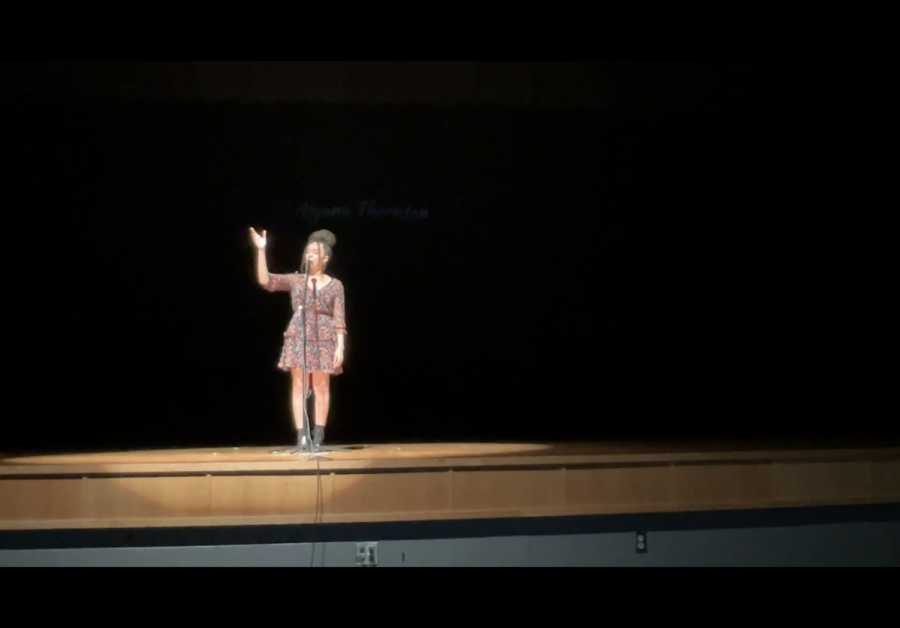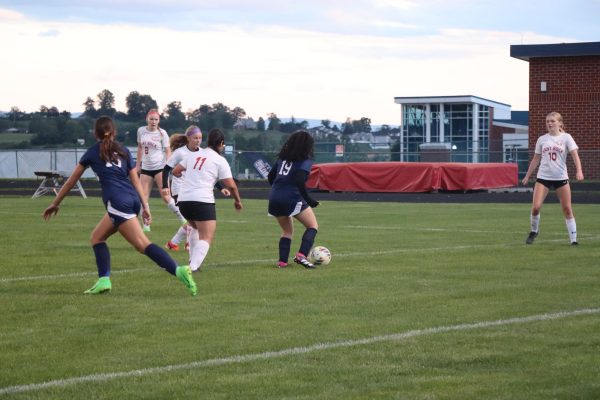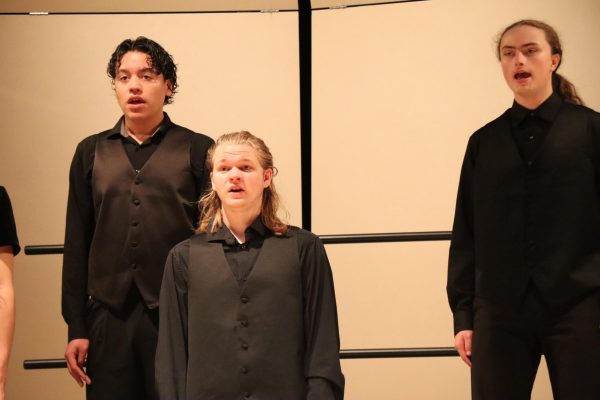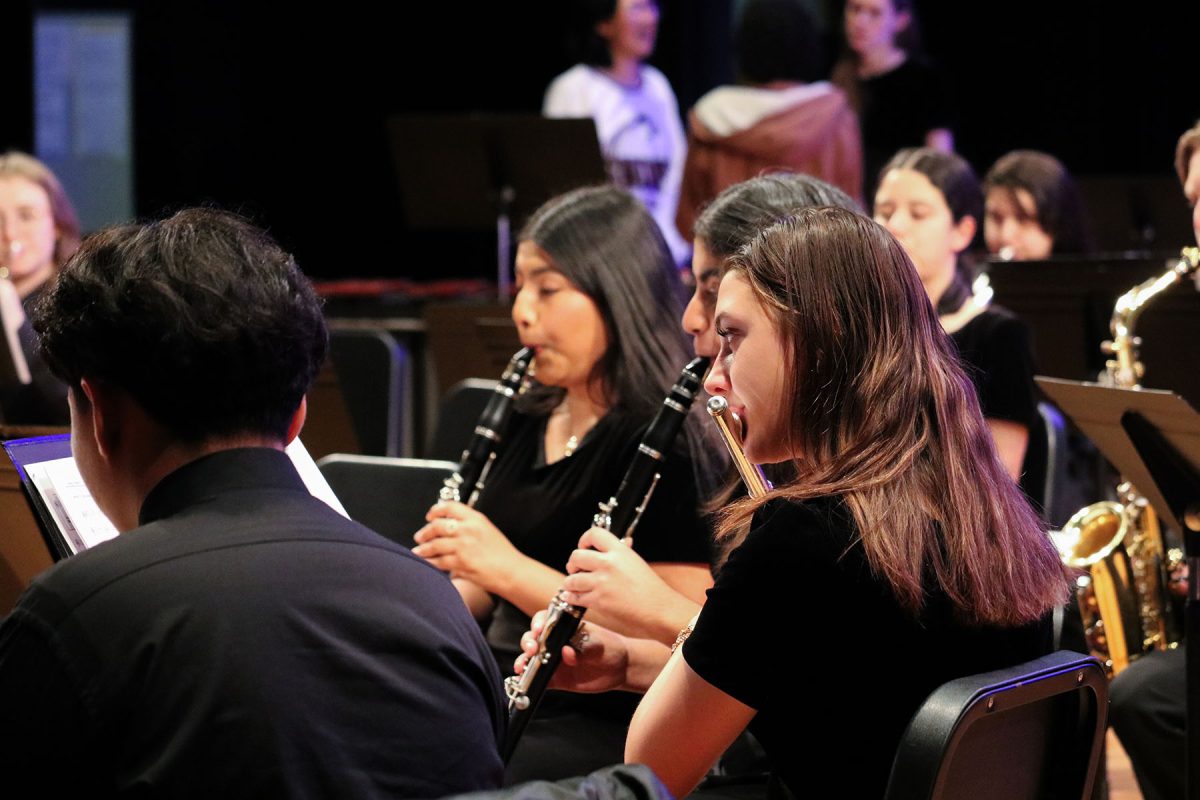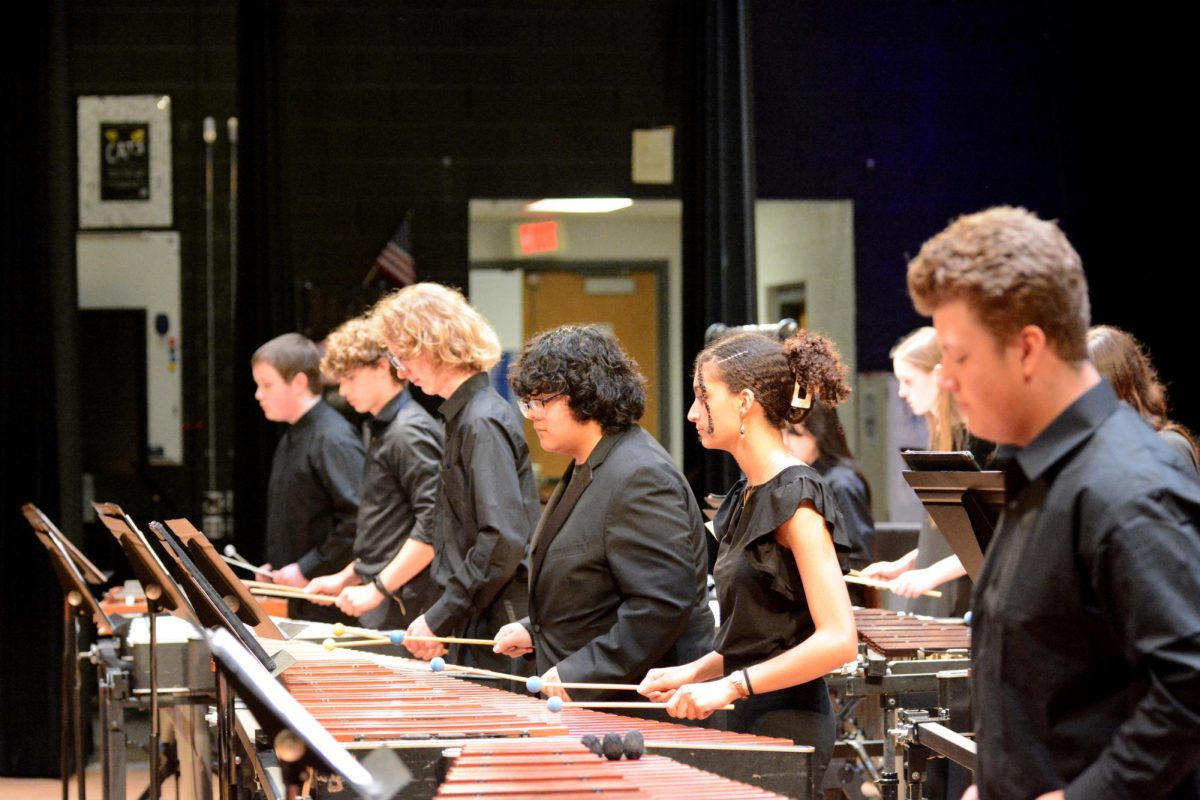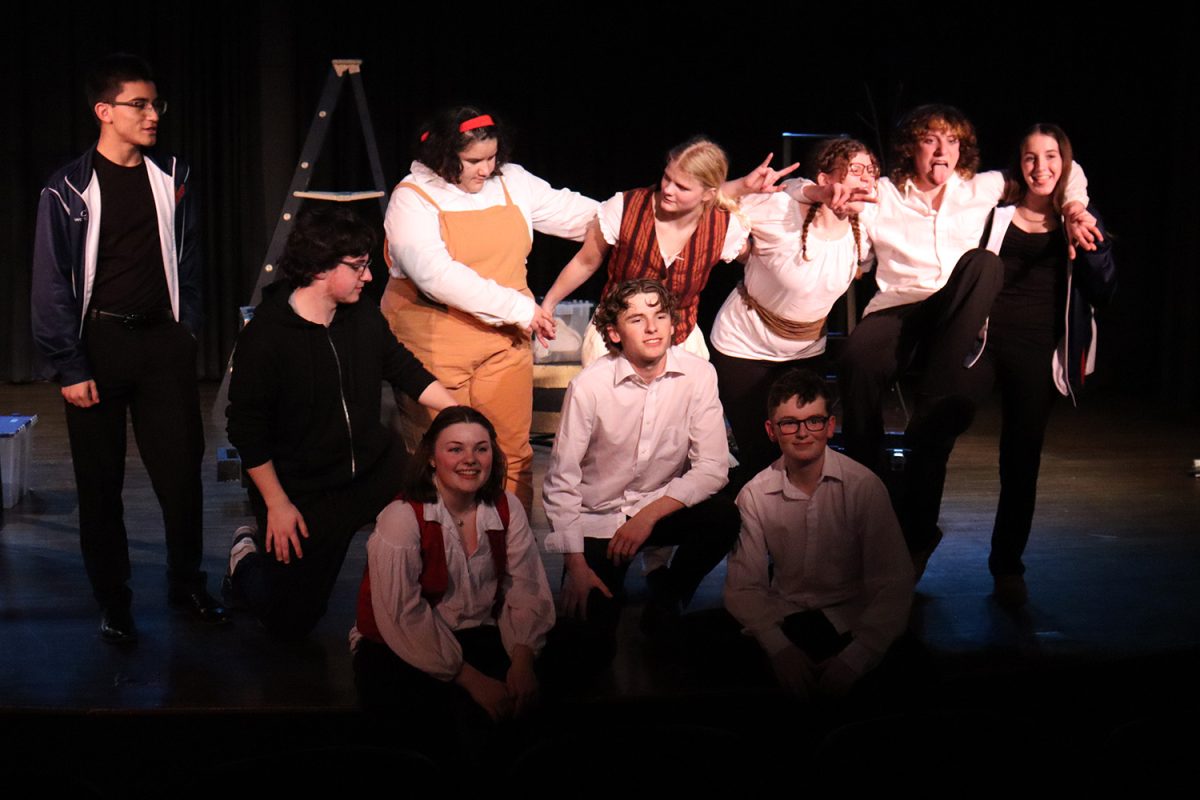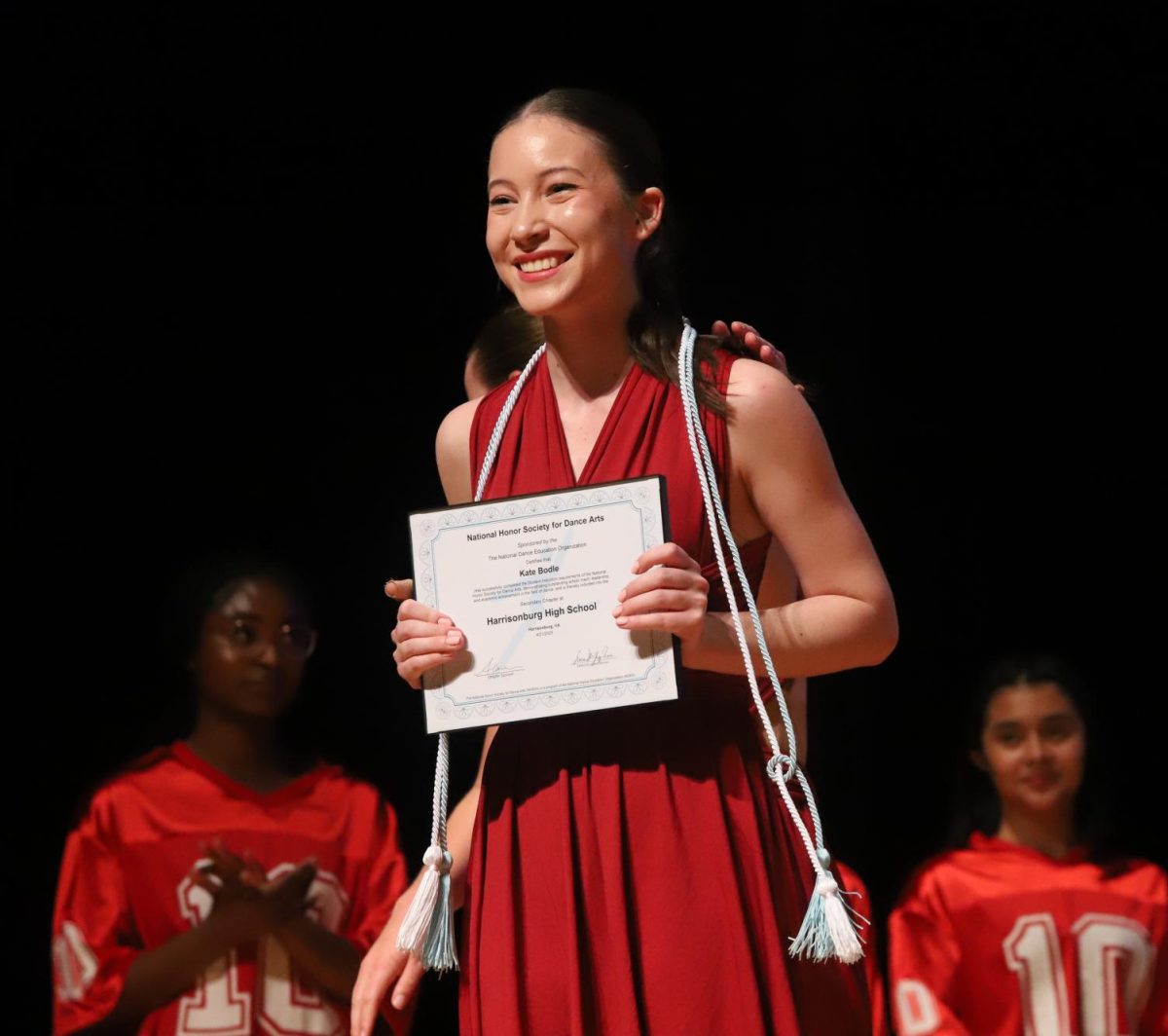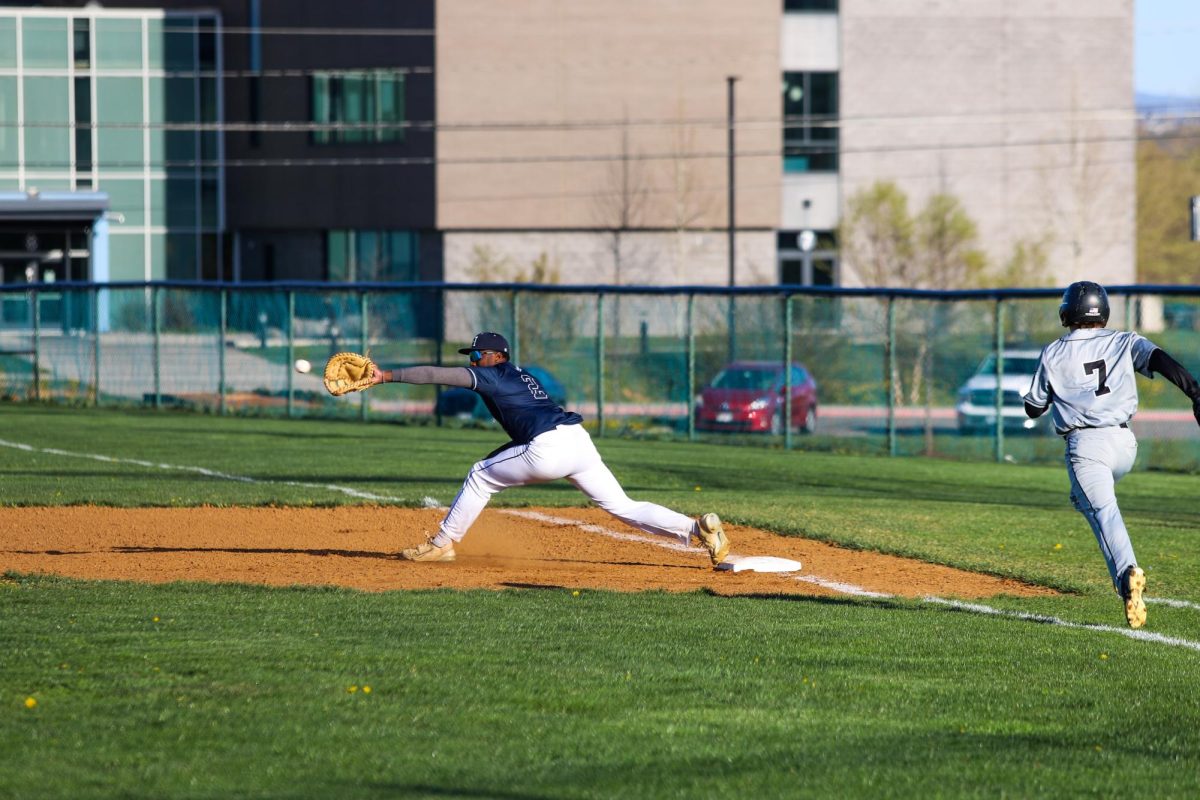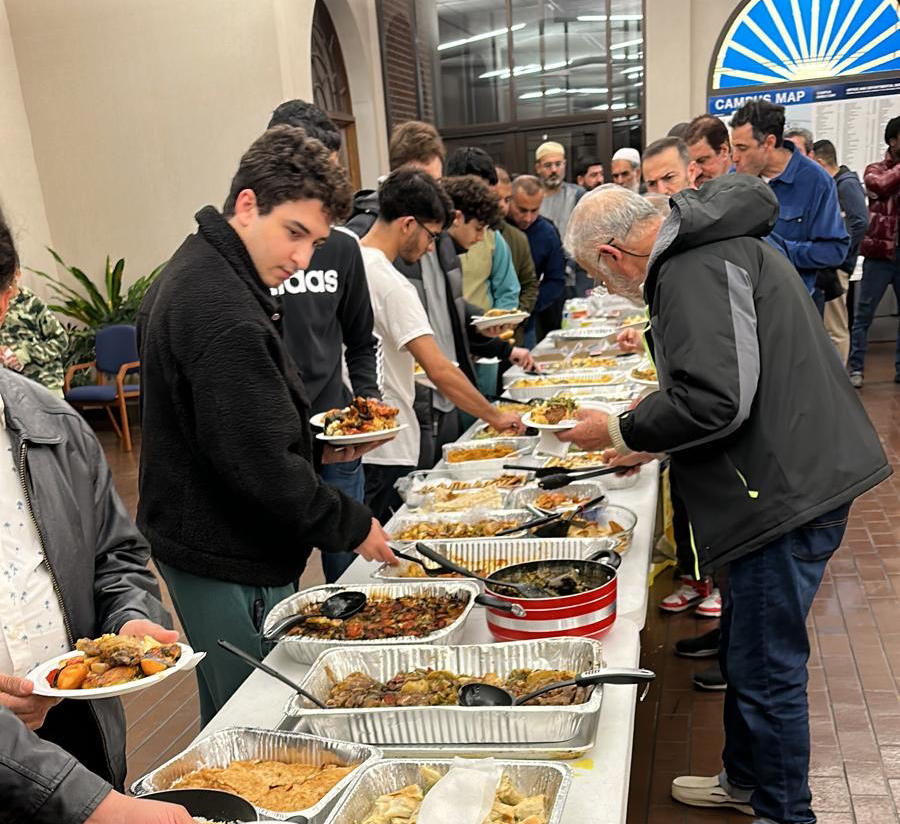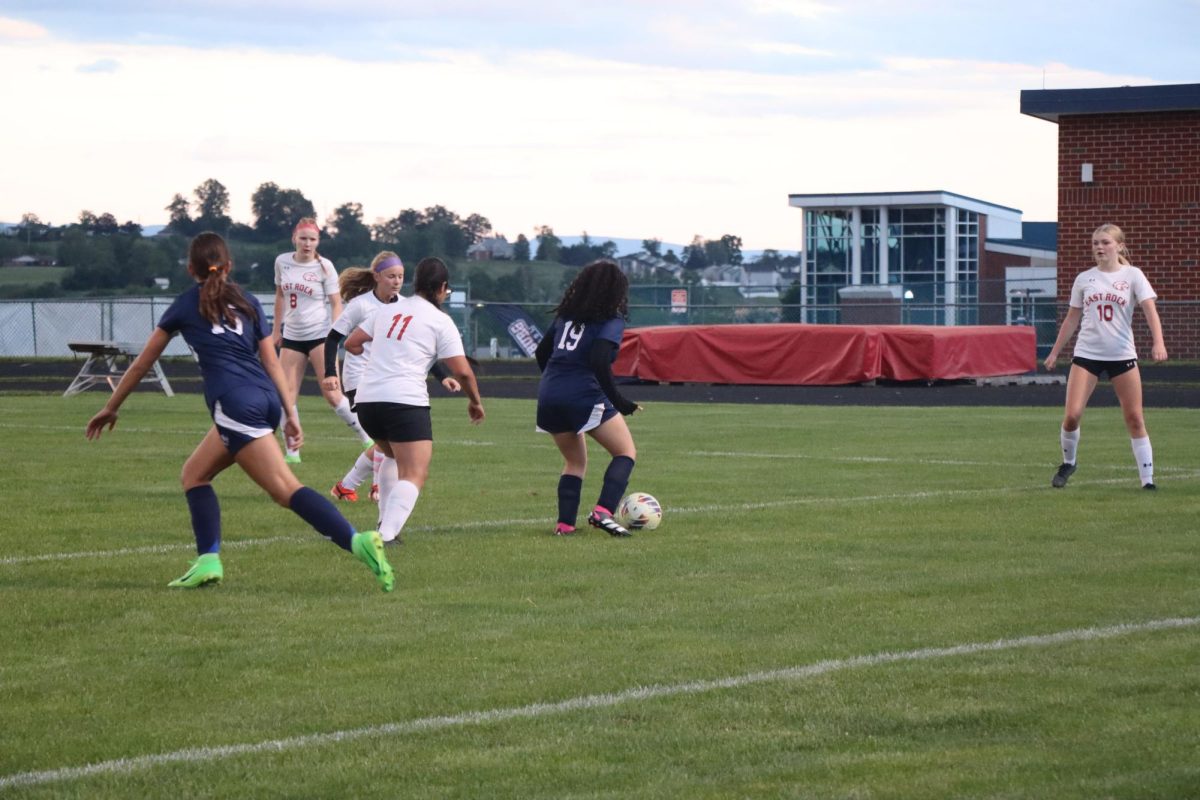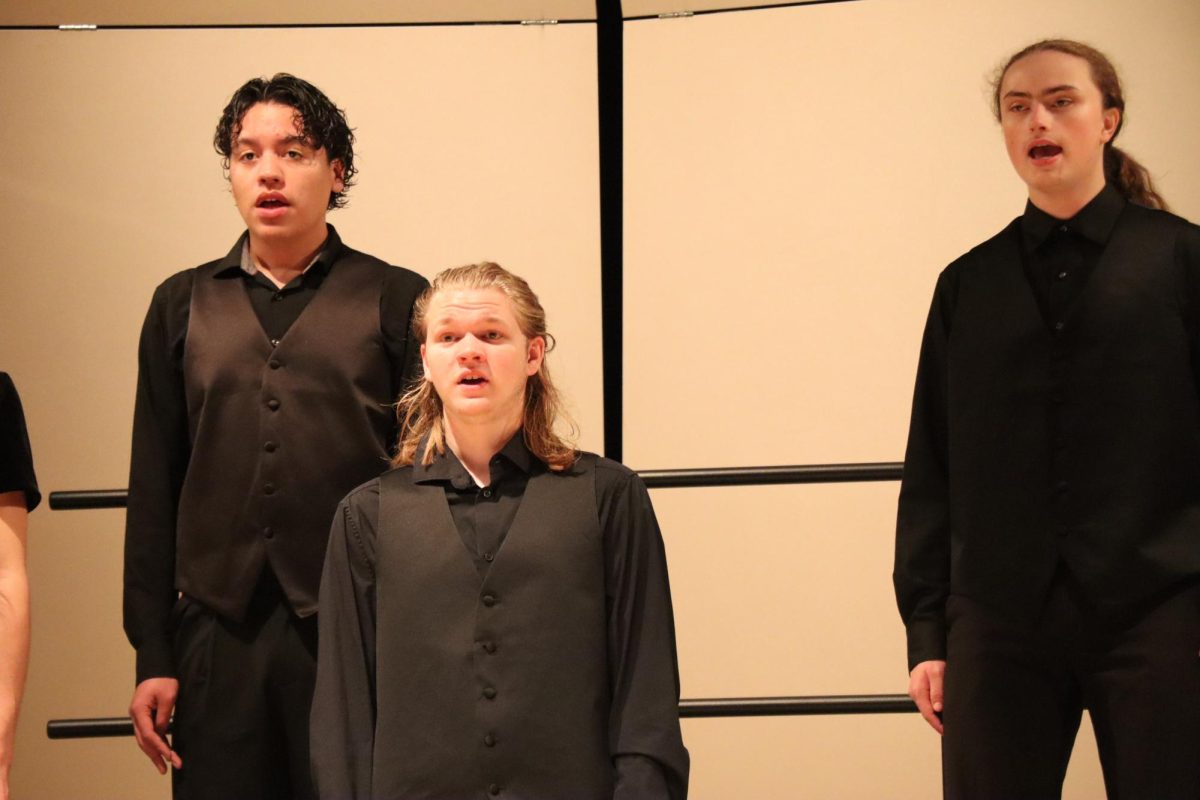Freshmen express themselves through FAACL showcase
May 9, 2022
“That’s really what expression is; just being able to find yourself and to express who you are,” freshman Aiyana Thornton said.
Since March 2020, lives all around the world have been altered due to COVID-19. Current high school freshmen lost their last year of middle school before transitioning to high school. For some fine arts students, the pandemic helped fuel their creativity and motivation, and for others, it proved detrimental to both.
The Fine Arts Academy (FAACL) provides a showcase at the end of each school year, exhibiting how each student enrolled in the academy has grown throughout the school year. FAACL freshmen, such as freshman Lydia King, were assigned to pick a color based on a paint swatch from a hardware store and find inspiration from that color in whatever way possible. While each student received the same assignment, their projects were all unique to their identity.
“I think expression in fine arts is so important for me personally because self-expression doesn’t always come easy for me. Art, however, is a part of who I am which becomes a really useful tool for how I express myself,” King said. “FAACL also helps with [expressing myself] because it forces you to step outside your comfort zone while also expressing yourself through your theme, thus helping you grow as an artist.”
For King, who is part of the visual arts and dance strand, COVID-19 helped her spark creativity and find her true self. She was able to find originality during a time when she couldn’t easily find support from others. Her newfound voice helped drive her showcase and other works of art.
“The biggest way my art has changed in the past few years is that I’m finding my voice as an artist. I used to try and base my art on other people’s styles, but now I’m exploring my own style and figuring out how I can represent who I am throughout my art. This change really occurred during quarantine because I had no inspiration but still really wanted to make art,” King said.
Freshman Anna Yoder, a student in the dance strand of FAACL, was one of many who struggled with finding her passion for dance while in quarantine.
“Before quarantine, I was not a very confident dancer, and I had never done my own choreography before. Over quarantine, I didn’t get to dance as much, so my confidence got even worse there. Afterward, I became a lot more confident on stage, and I’ve improved my choreography skills a lot, especially since the beginning of the school year,” Yoder said.
Each artist strived to capture a different characteristic or idea in their showcases. There were topics such as freshman Eliza Malcolm, who drew a piece about hope and despair. There were also topics like freshman Aiyana Thornton, who created a poem about discrimination and equality.
“I chose [a] beautiful array of warm yellows, one of the color names is called ‘Shooting Star’. ‘Shooting Star’ made me think of wishes and hope in moments of despair. I want[ed] to capture that through my piece,” Malcolm said. “[Prompts like this is] a way to express ideas that [can’t] translate so well either spoken or written.”
Thornton, who takes part in the theater strand, used a spoken word poem to voice her thoughts. The inception of her idea came from the color ‘Providence Blue’. With this, she came across the painting known as ‘WaterFire’ by Barnaby Evans in Providence, Rhode Island.
“[The painting] inspired [me] to do a spoken word poem on the elements of water and fire, but I wanted [it] to have a deeper connection to me,” Thornton said.
To create a deeper connection, Thornton wanted to discuss the division between the people of color (POC) and America and the police. While the two aspects thrive on their own and with others, they are often hostile to each other.
“That’s how I settled on having fire represent POC and America and having water represent police and how that’s the relationship currently but it’s always been very, very hostile,” Thornton said.
The artist’s initial ideas aren’t always what is produced in the end. In Malcolm’s visual arts strand, she ended up creating multiple mock-ups of different ideas and discussing her ideas with peers and teachers before she came up with her final project. It felt frustrating at times, but in the end, she decided the work and thought she applied was worth it.
“After getting some advice from peers and Ms. [Jauan] Brooks, I decided that it would be better to go with a canvas, which worked out perfectly…because after creating yet another mock-up of that, I decided that I liked it better than the original idea,” Malcolm said.
Amongst her other extracurriculars, Yoder had to devote a significant amount of time to perfecting her showcase project.
“We had to spend a lot of time doing work outside of school and spent many hours putting time into [creating our own showcases],” Yoder said.
Thornton and Yoder agreed that the outcome of their projects was worth the exhaustion. Through their artwork, they shared their personal views and sentiments.
“It really felt like a big moment, [once we had concluded our projects]. We’d worked so hard on these projects. We really poured all of our energy into these things,” Thornton said. “ My project was super interesting and personal to me. It felt great being able to get my artistry out there and something that I’m super passionate about being brought to light.”
In fine arts, expression is often the main motivator to create. Every artist wants to express something different, and with their art, they can give it a distinct and personal touch.
“Expression is really important in the fine arts because it’s a creative outlet for many people when you know other things might just not be available or not work for them. It’s really important to have that stable form. Like that outlet, right?” Malcolm said.



